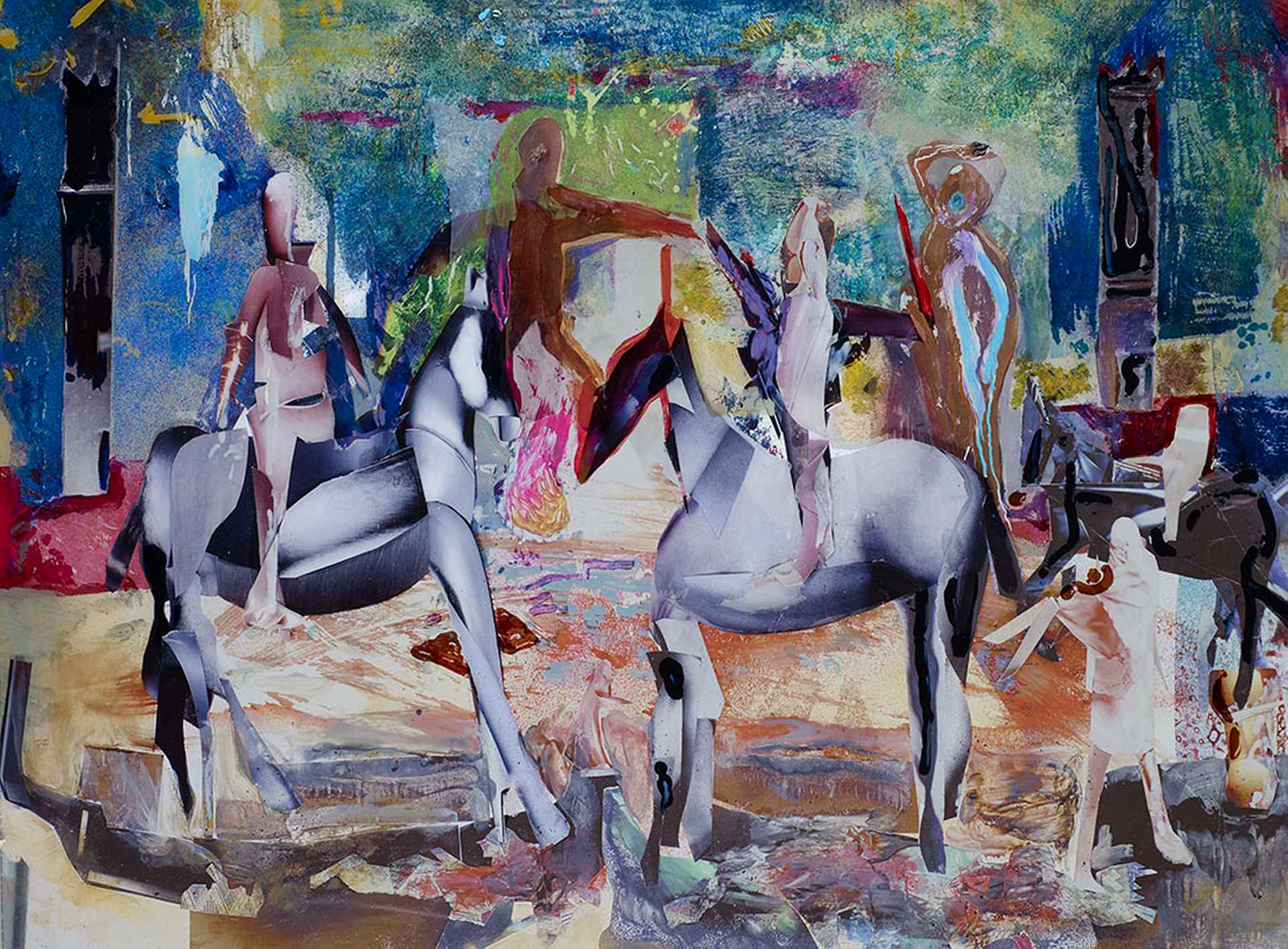
‘Checkmate’, two abstracted figures stand tall on two horses, head-to-head like knights on a checkerboard. Hazy blues and greens emerge and juxtapose with more opaque reds and blacks, creating a pleasing pull and balance between the two. Both figurative and abstract, Coley’s works have a way of challenging the eye and pulling us in, in a way that is endlessly captivating.
- Media: framed mixed media on glass
- Dimensions: 135 x 103cm
- Price: £2900.00
In ‘Checkmate’ by Nick Coley, two abstracted figures stand tall on two horses, head-to-head like knights on a checkerboard. The title suggests a finality - are these figures playing a game, or duelling? Who is the winner? Hazy blues and greens juxtapose with opaque reds and blacks, creating a pleasing pull and balance between the two. Both figurative and abstract, Coley’s works have a way of challenging the eye and pulling us in – the more we observe this piece, the more jumps out from the surface. There are clear classical influences in Coley’s works, taking inspiration from the histories of Ancient Greece, for example. Working with a toolkit of brushes, a Dremel, etching tools and more, Coley works onto one side of Perspex or glass, and the final image is reversed and viewed through the other side. This etching, scraping and build-up of paint creates depth and tactility, and allows the light to bounce off and protrude into each etch and crevice. “Incorporating collage to dramatic effect, his wealth of experience shows and shines with the confidence that can only come through fearless experimentation with both composition and his materials” An artist renowned for his unique process, Coley works with this formula of materials to create visceral, bright, and jovial compositions. Coley was born in the Midlands but moved to Yorkshire at a young age, where his love for drawing began early on. It was only later in his life that Coley’s artistic career began to take shape, where he discovered glass and perspex as surfaces he could manipulate and paint onto. Working with a vibrant palette, Coley’s oeuvre reflects his surrounding environments – whether that’s his home or travels far and wide, to places such as Malta. Coley will dedicate time to each space he resides, taking in information through painting and drawing, to translate later into more final compositions. 'Checkmate' is no exception to this - a visceral and exciting composition that is imbued with narrative, this piece is a must for any contemporary art collection.
Born in the Midlands but raised in Yorkshire, Nick Coley (b.XXXX) is an artist who has developed his own unique creative toolkit to create an exhilarating body of work. Working on glass, Perspex, and metal, Coley creates mysterious compositions with equipment ranging from paint brushes to power tools. With an exuberant yet judicious use of colour, Coley's works reflect his classical influences, as well as his surrounding environments. Many of his works celebrate where he grew up, as well as his travels to places such as Malta. Coley will often sit and observe his surroundings, taking in information through drawing and painting, which are then expanded to large-scale compositions. With an interest in art from a young age, Coley's career only began to take shape later on in life, after discovering glass as a material he could work with. “Power tools have given me a great freedom to express in dynamic strokes the dynamic I see in everyday nature” Using etching and power tools, Coley began to etch and scrape into glass, metal, and Perspex, creating visceral textures which capture and reflect light throughout the day. These textures are then enhanced with paint to create energetic compositions that are tactile and full of life. Coley's glass and Perspex works utilise both sides of the material - Coley will engrave and paint onto one side, with the final image presented on the other in reverse, giving an alternative glossy finish. Coley's works are dynamic and bold, leading him to a myriad of successes - one being a feature on the BBC’s ‘Home is Where the Art Is’, as well as multiple exhibitions across the country. His works boast a three-dimensional quality which is impossible to capture through a photograph – they must be seen in the flesh for their full impact.